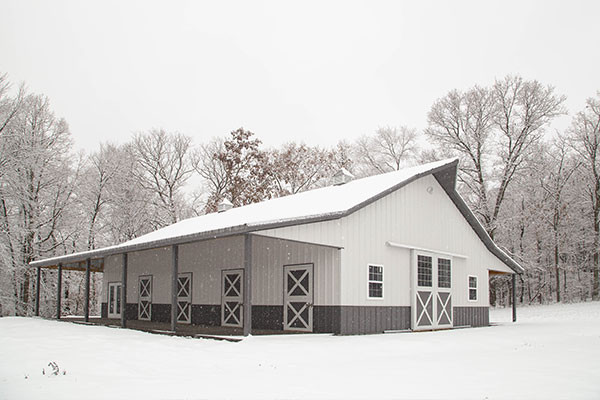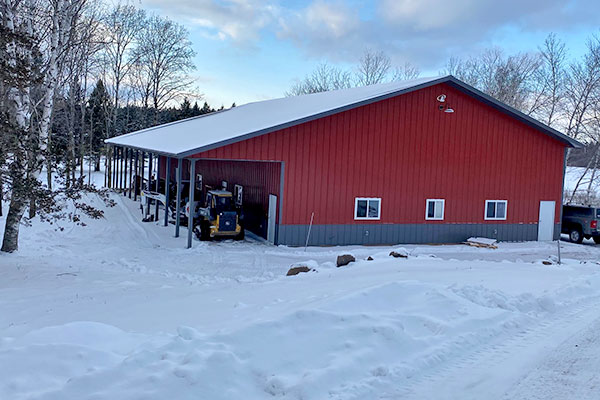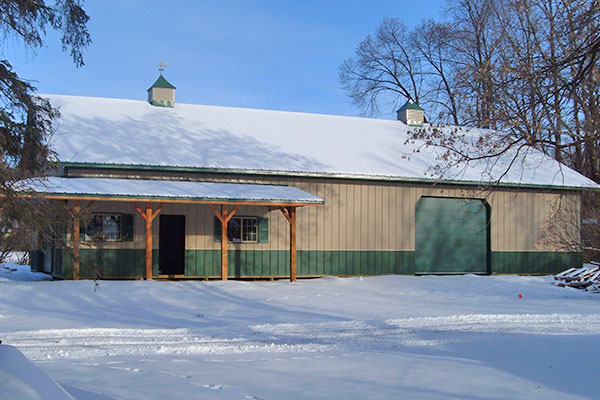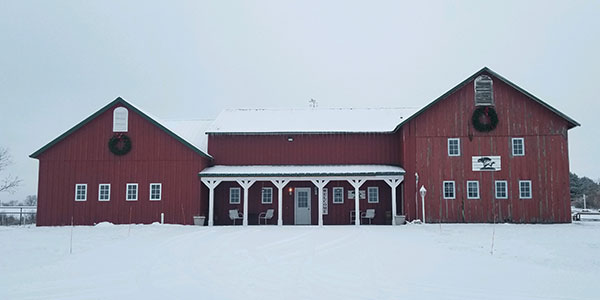How to Prepare your Pole Barn for Winter
Known for their versatility and durability, pole barns are a great asset for almost any use. While pole barns require relatively little to no maintenance compared to other building types, there are a few ways you can help prepare your building for harsh winters that come with living in cold weather climates.
It is important to note that heavy snow loads on roofs can cause an extreme amount of stress, so it’s crucial to ensure your building can carry the weight. What’s more, drifting will occur, and your building must be designed to handle higher loads in areas where snow will accumulate in larger quantities.
.jpg)
Lester Buildings gives you the peace of mind that comes along with having a fully engineered pole barn that is designed to meet the local wind and snow codes specific to where the building is constructed. The secret to an engineered building is that there is a guaranteed load path going from the roof all the way to the footings.
Furthermore, Lester Buildings are backed by a lifetime structural design warranty. Not all pole barns from other manufacturers are engineered or designed this way, so it is necessary to understand the difference. (Learn more about load paths and engineered buildings)
If you live in an area where heavy snow load is a concern, there are ways you can prepare your pole barn for winter. Or, if you are planning to construct a new building, there are a few things you may want to consider during the design process to better optimize your building for snow.

Winterizing a Pole Barn
Check Windows and Doors
If you have sliding doors on your building, check that the path of the door is clear of leaves and other debris that may accumulate over time. Chris Brinkmann, Construction Supervisor at Lester Buildings, says “this prevents snow and ice from building up and causing more work to clean the path in the wintertime. Making sure the path of travel is clear throughout the winter months is key as well.”
In both heated and cold storage buildings, it is a good idea to remove window screens prior to winter. “This keeps snow from building up between the screen and windowpanes. This helps prevent possible water damage once snow begins to melt,” adds Brinkmann. At this time, it is also good to check for unsealed doors or windows that may allow snow or moisture in.
Clean Gutters
If you have gutters installed on your pole barn, buildup of leaves and twigs will prevent your gutter system from doing its job. Clearing gutters of debris will prevent any problems that may arise when rainwater or melted snow has nowhere to go. This also helps to avoid ice dams from forming.
Prune Landscape
Pruning the landscape and trees that surround your building will help prevent overgrown branches that may scratch your steel siding, which could lead to rust. Be cognitive that snow and ice may weigh tree and shrub branches down in the winter.
Have a Snow Removal Plan
Snow will slide off a metal roof with a standard 4/12 and higher pitch. Snow on a shingled roof will typically melt and drip off in water form. With that being said, you will want to have a plan for the snow when it slides off your metal roof and where you are going to move it when it does.

New Building Design Considerations for Cold Weather Climates
An important thing to consider is where you place your service doors, overhead door and sliding doors. When snow slides off your roof, do you want it in front of your doors? “Placing the doors on the gable end of the building is always a good plan. At least the service door. Planning this might also help decide how big of a sidewall or end wall overhang you add to your building, or even a porch or an open lean to,” says Brinkmann.
Another thing to consider is the grade going away from your building to allow proper drainage and to not let the snow pile up near the sidewalls of your pole barn. This could lead to bigger issues by causing water infiltration into the building when the temperatures warm.
There are other things you will want to consider before constructing a pole barn for snow loads, which you can learn more about by visiting our blog post.
Here at Lester Buildings, we understand how important it is to keep your belongings safe and secure year-round, especially during the tough winter months. With a Lester building, you can have peace of mind knowing your pole barn is going to withstand the test of time. Our team has over 75 years of experience with designing, manufacturing, and constructing custom pole barns. To learn more about why a Lester building is the right choice, download your free copy of Evaluating Your Building Supplier or contact us to find out how we can bring your dream building to life.

